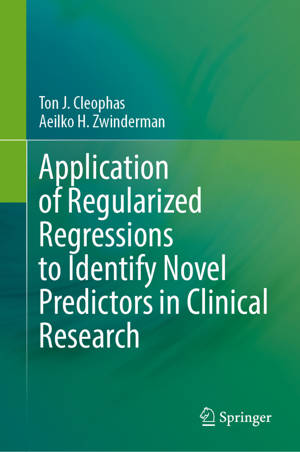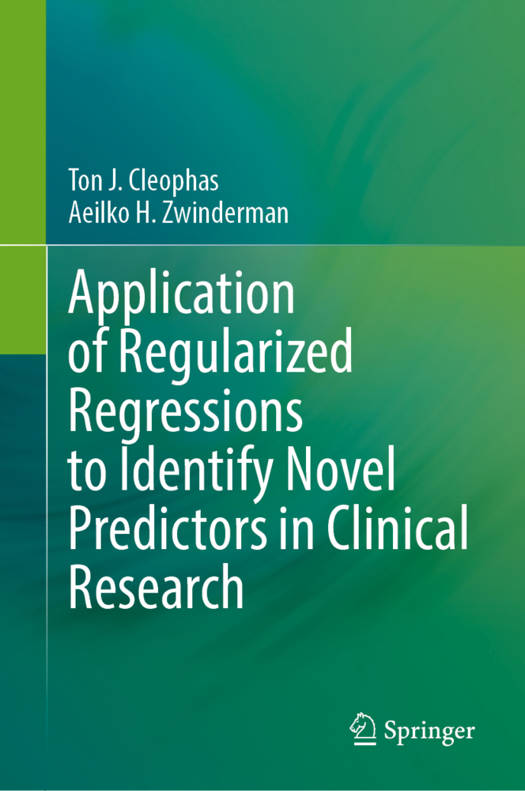
- Retrait gratuit dans votre magasin Club
- 7.000.000 titres dans notre catalogue
- Payer en toute sécurité
- Toujours un magasin près de chez vous
- Retrait gratuit dans votre magasin Club
- 7.000.0000 titres dans notre catalogue
- Payer en toute sécurité
- Toujours un magasin près de chez vous
Application of Regularized Regressions to Identify Novel Predictors in Clinical Research
Ton J Cleophas, Aeilko H ZwindermanDescription
This textbook is an important novel menu for multiple variables regression entitled "regularized regression". It is a must have for identifying unidentified leading factors. Also, you get fitted parameters for your overfitted data. Finally, there is no more need for commonly misunderstood p-values. Instead, the regression coefficient, R-value, as reported from a regression line has been applied as the key predictive estimator of the regression study. With simple one by one variable regression it is no wider than -1 to +1. With multiple variables regression it can easily get > +1 or < -1. This means we have a seriously flawed regression model, mostly due to collinearity or non-linear data. Completing the analysis will lead to overfitting, and thus a meaningless significant study due to data spread wider than compatible with random. In order for the regression coefficients to remain in the right size, fortunately a shrinking procedure has been invented.
In the past two decades regularized regression has become a major topic of research, particularly with high dimensional data. Yet, the method is pretty new and infrequently used in real-data analysis. Its performance as compared to traditional null hypothesis testing has to be confirmed by prospective comparisons. Most studies published to date are of a theoretical nature involving statistical modeling and simulation studies. The journals Nature and Science published 19 and 10 papers of this sort in the past 8 years. The current edition will for the first time systematically test regularized regression against traditional regression analysis in 20 clinical data examples.
The edition is also a textbook and tutorial for medical and healthcare students as well as recollection bench and help desk for professionals. Each chapter can be studied as a standalone, and, using, real as well as hypothesized data, it tests the performance of the novel methodology against traditional regressions. Step by step analyses of 20 data files are included for self-assessment. The authors are well qualified in their field. Professor Zwinderman is past-president of the International Society of Biostatistics and Professor Cleophas is past-president of the American College of Angiology. The authors have been working together for 25 years and their research can be characterized as a continued effort to demonstrate that clinical data analysis is a discipline at the interface of biology and mathematics.
Spécifications
Parties prenantes
- Auteur(s) :
- Editeur:
Contenu
- Nombre de pages :
- 273
- Langue:
- Anglais
Caractéristiques
- EAN:
- 9783031722462
- Date de parution :
- 21-12-24
- Format:
- Livre relié
- Format numérique:
- Genaaid
- Dimensions :
- 164 mm x 236 mm
- Poids :
- 653 g

Les avis
Nous publions uniquement les avis qui respectent les conditions requises. Consultez nos conditions pour les avis.






